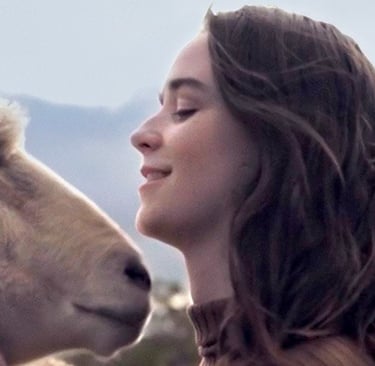What is Mulesing?
and what makes it inethical?


image: credit to the animal protection institute
Warning: not cute
I found out more about Mulesing when researching potential suppliers for my merino knitwear wool. It shocked me to find out about the cruelty of this procedure. It's not a nice read but I think its necessary to factor in, when looking to buy merino wool products. The biggest international supplier of merino wool is Australia, contributing to 80% of the world's fashion industry, and it is the only country where cutting away the rear is still legal. 20-30% of lambs die in Australia every year compared to a 9-20% global average. The worst part is, there are no laws to ensure pain medication is used. For this reason, I source my new yarn from a mulesing-free British mill.
Mulesing, also known as Live Lamb Cutting, is a horrible practice that is done to reduce the chances of fly strike in most merinos bred for wool. It involves using shears to cut off the hind flesh of a lamb and is rarely carried out with any pain relief. It causes weeks of suffering and is done globally despite there being many alternative solutions. Lambs are tied to metal cradles on their backs and after being cut, they are left to free bleed until the flesh scars.
Flystrike occurs when blowflies lay eggs in the damp folds of a sheep's skin and this can lead to an infestation of maggots. In 1883, a new type of merino sheep was bred to produce more yields of wool. The higher surface area of skin on its body caused 'wrinkles' which fold over at the rear of the sheep. In these folds, blowflies can lay maggots and they begin to eat away at the skin in order to grow. Sheep can die in 24 hours from this, so it's important to list alternative solutions to mulesing.
The most simple option that avoids live lamb cutting is choosing merino sheep with smooth skin. They have a lower mortality rate which produces higher total yield of wool clip, making up for the loss in surface area per animal. Its also saves money and time as farmers must be trained in mulesing practice with time dedicated every season to performing the procedure on every lamb. Another argument for the replacement with a smoother breed is that consumers are becoming aware of the inethicalities taking place. They are choosing to purchase from companies with a stronger moral compass and seek information about the sourcing of their fibres.
There are around 4000 proposed alternative solutions to this cruel farming technique and it's important that this is spoken about to improve the quality of life for the sheep that provide invaluable wool for us to wear. To read more on this, I have attached some links:
https://www.four-paws.org/about-us/faqs-collection/mulesing-faqs
https://www.peta.org/issues/animals-used-for-clothing/wool-industry/mulesing/
https://voiceless.org.au/the-ethics-of-wool-beyond-mulesing/
